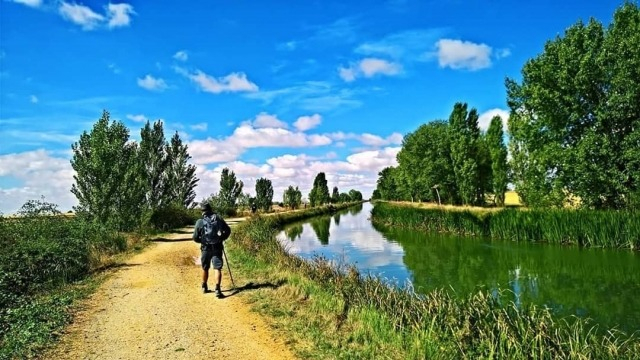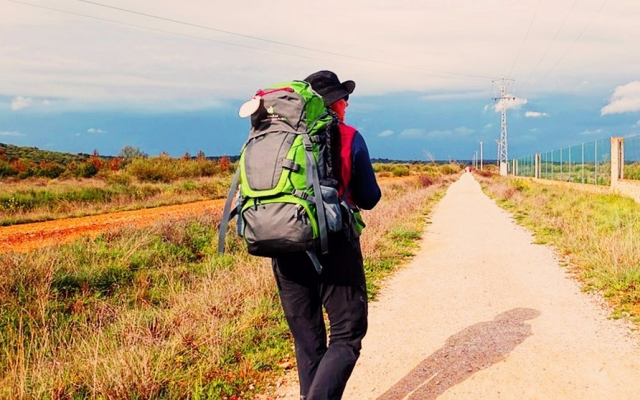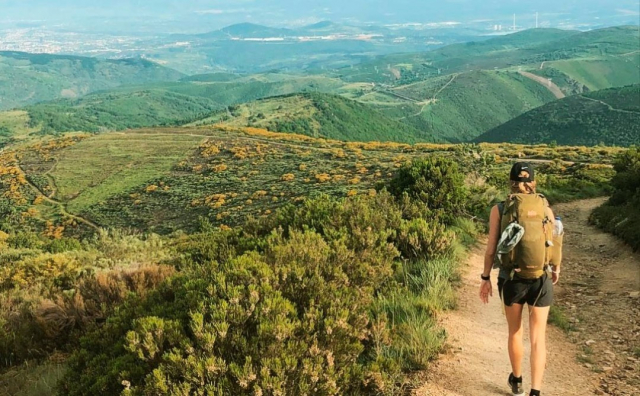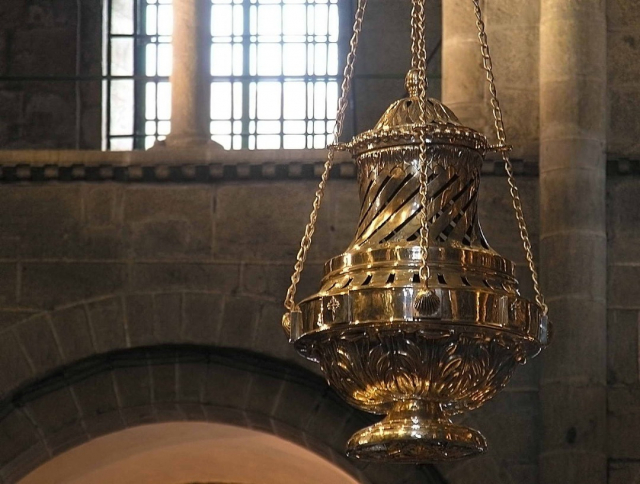What is a pilgrim? Why make a pilgrimage to Santiago?
What is it that leads people to prepare the backpack, throw it on their backs and start walking?
What does it mean to be a pilgrim?
- Surely you are interested in: What types of pilgrims are there on the Camino de Santiago?
Although the concept of pilgrim itself has a different meaning for each of us, it is worth taking a look at the definitions given by the RAE to understand what a pilgrim is. On the one hand we find a fairly general meaning that defines a pilgrim simply as a "person who walks in foreign lands". On the other hand we find a more religious definition and historically focused on the pilgrim; that person who "by devotion or vow goes to visit a shrine".
From the point of view of Christian pilgrimages, the pilgrim is anyone who takes time away from their daily life to go to a holy place, whether it is Santiago de Compostela, Jerusalem, Rome or any other pilgrimage point in the world. However, the meaning of what a pilgrim is today goes beyond faith or spirituality; more and more pilgrims are travelling to holy places in search of experiences such as the intrinsic adventure of the pilgrimage, overcoming their own physical and mental limits, enjoying the historical and artistic heritage and much more.
Why make a pilgrimage to Santiago de Compostela?
- Surely you are interested in: How to plan the Camino de Santiago?
In 2019 more and more people are attracted to walk the Camino de Santiago with the aim of leaving aside their usual routine, fleeing from their environment, even if only for a few days and get in touch with nature, with other pilgrims with the same motivations, in short, to breathe. Many pilgrims seek in the pilgrimage route to Santiago de Compostela an experience that takes us back centuries, with which we learn to value the small details - such as time, company, solidarity, respect - and we play down the importance of insignificant elements that have an exorbitant weight in our lives.
Pilgrimage to Santiago de Compostela requires effort, conviction and commitment to walk dozens of kilometres every day, which is out of the ordinary. Precisely this is what many pilgrims seek, knowing that everything they give on the Camino de Santiago they receive multiplied by 10. When we finish the pilgrimage route and return home we do it with sorrow for having to return to the routine, but with the spirit full of good experiences and memories to share.
What pilgrimage routes are there besides the Camino de Santiago?
- Surely you are interested: Six great pilgrimage routes in the world
The Camino de Santiago is by no means the only pilgrimage route that exists in the world, nor in the Christian world, there are hundreds scattered around the world and all deserve the same respect. Among the most important religious routes in the Christian world we find the pilgrimage to Rome, to Jerusalem, to Lourdes or to Fatima, to name but a few.
Here is a brief selection of some of the best known routes:
- The Way of St. James: Along with Rome and Jerusalem it is one of the three most important routes of Christianity. It has many branches, all ending in the cathedral of Santiago de Compostela; however, the most travelled route is the French Way, which starts in the Pyrenees.
- The Via Francigena: This is a major Christian pilgrimage route that runs 2,000 km from north-west to south-west across Western Europe, from the English town of Canterbury to the holy city of Rome. The route emulates the journey of the Archbishop of Canterbury Sigerico in 990, making the pilgrimage to Rome in 80 days (1,600 km) to receive the pallium from the hands of Pope John XV.
- The Lebaniego Way: This is a small pilgrimage route that runs through the north of Spain, between the towns of San Vicente de la Barquera and Santo Toribio de Liébana, where it is said that the largest piece of the Cross of Christ is preserved. The pilgrims who walk this route are called cruisers; their Jubilee year is celebrated whenever 16/4 (Santo Toribio) falls on a Sunday.
- Kumano Kodo: This is a pilgrimage route twinned with the Jacobean route, which takes the pilgrim to a version of rural, thousand-year-old Japan, far from the fast-paced life of the big cities. The Japanese have been walking it for centuries, crossing its paths across the mountainous Kii Peninsula to the Kumano Sanzan temple complex, the birthplace of the Kumano cult.
What does a pilgrim do when they arrive in Santiago?
Once pilgrims have arrived at the cathedral of Santiago de Compostela, after a long journey, they must present their Pilgrim's Credential at the International Pilgrim Welcome Centre to obtain their Compostela. However, the journey does not end there, as in the city itself, all pilgrims have the custom of performing a series of rituals.
- Embracing the saint. This is one of the most emblematic traditions of the Camino de Santiago, in which pilgrims approach the effigy of the Saint and embrace him. They can also visit the remains of the Apostle, which were placed in a silver urn with Romanesque motifs, inside the Apostolic Crypt.
- The Pilgrim's Mass. For the most devout pilgrims, the Pilgrim's Mass is celebrated every day at 12.00h, in which all those who have arrived in the city on the last day are welcomed. In addition, on certain dates, pilgrims can see the famous botafumeiro in operation.
- During the Xacobean Years, pilgrims must enter the interior of the Cathedral from the Puerta Santa or Puerta del Perdón, which is open during these years. If you go through this door you will be forgiven for all your sins.
Related
Routes
Blog
 ¿Vas a hacer el camino de Santiago? Cuida tus pies antes y después
¿Vas a hacer el camino de Santiago? Cuida tus pies antes y después
 5 razones por las que contratar un seguro de viajes
5 razones por las que contratar un seguro de viajes
 Formas de hacer un logotipo
Formas de hacer un logotipo
 La importancia del registro de llamadas durante tu viaje por el Camino de Santiago
La importancia del registro de llamadas durante tu viaje por el Camino de Santiago
Information
Points of interest
Cities & Towns | Hostels | Lodgings | Restaurants | Saddlery | Doctors | Points of interest | Bikes workshop
Contact us | Privacy policy | Cookies policy | | Terms of use | Authorship | Web Map | Consentimiento
© Copyright LA VOZ DE GALICIA S.A. Polígono de Sabón, Arteixo, A CORUÑA (ESPAÑA) Inscrita en el Registro Mercantil de A Coruña en el Tomo 2438 del Archivo, Sección General, a los folios 91 y siguientes, hoja C-2141. CIF: A-15000649



